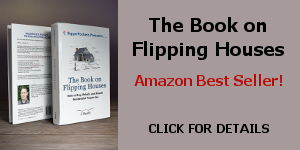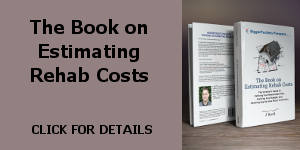Common RE Performance Measurements
We now have all the key pieces of information necessary to determine if this property meets the financial bar you’ve set for making an investment. If you remember from the beginning of this tutorial, I listed a number of key outputs you will want from this analysis. In this section, I will focus on the first two of these — Cash Flow and Rates of Return.
In the last section, we learned that NOI was the total income the property produced, not including the debt service (loan) costs. You might have been wondering, “Why doesn’t NOI include the expense cost of the loan, since that will ultimately affect your bottom line?”
Cash Flow
The reason we don’t include debt service in the NOI calculation is that NOI dictates what level of income the property will produce independent of the owner’s particular financing model. Because the monthly or annual debt service amount is going to be specific to the particular financing plan (it will be dependent on the downpayment amount/percentage, interest rate, amortization schedule, etc), if we included debt service in the NOI, then NOI would only be meaningful in the context of that particular financing plan. And because different buyers will no-doubt have different financing, it’s important to have an income metric that is specific to the property, not the buyer.
That is why we have the cash flow calculation. Cash flow is equivalent to NOI adjusted for the expense of debt service. Specifically, cash flow is the NOI minus the debt service payments:
Cash Flow = NOI – Debt Service
As might now be obvious, cash flow is the total profit you will see at the end of the year from this property. As is also probably obvious, the higher your debt service payments (the larger your loan, higher your interest rate, or shorter your amortization period), the smaller your cash flow. If you pay all cash for a property (don’t take any loan), your cash flow will equal the NOI — this is the maximum cash flow on the property.
If you recall from our financing data, our monthly debt service would be $2129 on this property, and therefore our annual debt service would be $25,548. For this property, our cash flow would be:
Cash Flow = NOI – Debt Services
= $37,169 – $25,548
= $11,621 (at the end of the year, we’d have $11,621 in our pocket from this property)
Hmmm, paying all cash will minimize my debt service (it would be $0) which would therefore maximize my Cash Flow. So, if paying all cash maximizes Cash Flow, and if you have the means to pay all cash for the property, why wouldn’t you?
Read on to find out!
Rates of Return
Cash flow isn’t the only important factor when it comes to analyzing the property. What is more important than cash flow is rate of return (also known as return on investment or ROI). Think of ROI as the amount of cash flow you receive relative to the amount of money the investment cost you (your “basis”). Mathematically, that would be:
ROI = Cash Flow / Investment Basis
Obviously, ROI is going to be higher when one or both of the following is true: Cash Flow is higher or Investment Basis is lower. You can see that from the equation above, but it should also be obvious when you think about it: if you can make a lot of money from a small investment, things are good!
What is a reasonable ROI, you might ask. Well, we already know our ROI from several other types of investing vehicles. For example, if you put your money in a high-interest savings account, your return (in this case, your interest rate) is about 5%. In mathematical terms, for every $100 you “invest” in your savings account, you get $4 in cash at the end of the year:
ROI = Cash Flow / Investment Basis
= $4 / $100
= 4%
We know that a savings account will have an ROI of about 4%. A CD will have an ROI of about 5%. And if you do a little research, you’ll find that investing in the stock market will have an average ROI of about 8-10%.
So, what would our ROI be on this property?
There are actually three ROI numbers that you should be concerned with; let’s explore each of these individually.
Capitalization Rate (Cap Rate)
Just like we have a key income value (NOI) that is completely independent of the details of the financing, we also have a key ROI value that is all independent of the buyer and the details of the financing. This value is known as the “Capitalization Rate,” or “Cap Rate.” Cap Rate is calculated as follows:
Cap Rate = NOI / Property Price
If there is a single number that is most important when doing a financial analysis of a rental property, the Cap Rate may be it. Because the Cap Rate is independent of the buyer and the financing, it is the most pure indication of the return a property will generate.
Here is the cap rate for our example property:
Cap Rate = NOI / Property Price
= $37,169 / $418,000
= 8.89%
Another way to think about Cap Rate is that it is the ROI you would receive if you paid all-cash for a property. Though, unlike cash flow, where the value is maximized by paying all cash, the Cap Rate is *not* necessarily the highest return you’ll get on a property. This is because Cap Rate assumes that the investment amount is the maximum (the full price of the property), and we learned above that the value of ROI calculations goes up as the investment amount goes down.
So, what is a good Cap Rate? It really depends on the area of the country you’re in, but in general, most areas see maximum Cap Rates in the 8-12% range. And just like the value of single family houses are based on the prices of comparable houses in the area, the value of larger investment properties are usually based on the Cap Rate of comparable investment properties in the area. So, if the average Cap Rate in your area is 10%, you should be looking for at least an 10% Cap Rate for your property (barring other more complex situations and considerations).
Cash-on-Cash Return (COC)
Just like there are multiple measures of income — NOI (financing independent income) and Cash Flow (financing dependent income) — there are also multiple measures of return. As we’ve discussed, the financing independent rate of return (the theoretical return on a fully paid property) is the Cap Rate, and of course there is the real (not theoretical) rate of return as well. This is called the Cash-on-Cash (COC) return, because it is directly related to the amount of cash you put down on the investment.
For example, we discussed that if you took $100 and put it in a savings account, you’d receive $4 per year, or 4% ROI. The COC is the equivalent measure of how much return you would make if you put that $100 into the property.
COC is calculated as follows:
COC = Cash Flow / Investment Basis
In our example, the annual Cash Flow was $11,621, and the investment of cash that we had to apply upfront on the property was $98,000 (this includes the downpayment, the improvements, and the closing costs). So, our COC is:
COC = Cash Flow / Investment Basis
= $11,621 / $98,000
= 11.86%
As this return is directly comparable to our savings account return, we can see that we are getting a better return than either a savings account or in a diversified stock portfolio (albeit with a lot more time and energy spent).
While it’s completely up to you on what rate of return you need to purchase a property, it should be obvious that if you’re getting less than a 10% return on a property, it’s probably not worth your investment (you’d rather take that money and invest in the stock market where you can do a lot less work).
But, before you run off and make any final decisions based on COC, consider that the Cash Flow you make on a property isn’t the only thing that affects your bottom line!
Total ROI
In addition to Cash Flow, there are several other key financial considerations that affect a property’s performance. Specifically:
- Tax Consequences (depending on your situation, you may gain or lose money to taxes)
- Property Appreciation (you may not be able to predict this, but if you can)
- Equity Accrued (remember that your tenants are paying off your property for you)
The difference between COC and Total ROI is that COC only considers the financial impact of Cash Flow on your return, while Total ROI considers all the factors that affect your bottom line. Total ROI is calculated as follows:
Total ROI = Total Return / Investment Basis,
where “Total Return” is made up of the components we discussed (Cash Flow, Equity Accrual, Appreciation, Taxes).
Let’s use the following for our Total Return calculation:
- Let’s assume we would expect a 2% appreciation on the value of the property this year, based on the improvements that we would do upon purchase (2% appreciation is $8360)
- We can calculate that the equity accrued in the first year of the mortgage is $3251
- Let’s also assume that for the sake of this example that there are no tax breaks (or extra taxes due) by owning this property.
The Total Return of the property for this year would be:
Total Return = $11621 + $8360 + $3251 + $0 = $23,232
And, therefore the Total ROI would be:
Total ROI = Total Return / Investment Basis
= $23,232 / $98,000
= 23.71%
Not too shabby, huh?




Leave a Reply